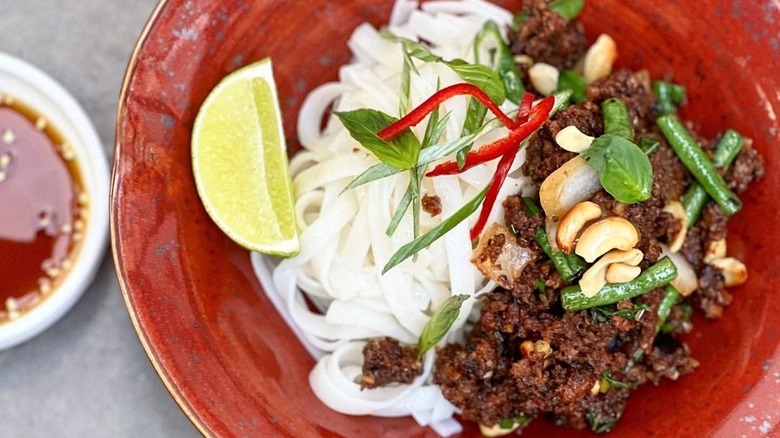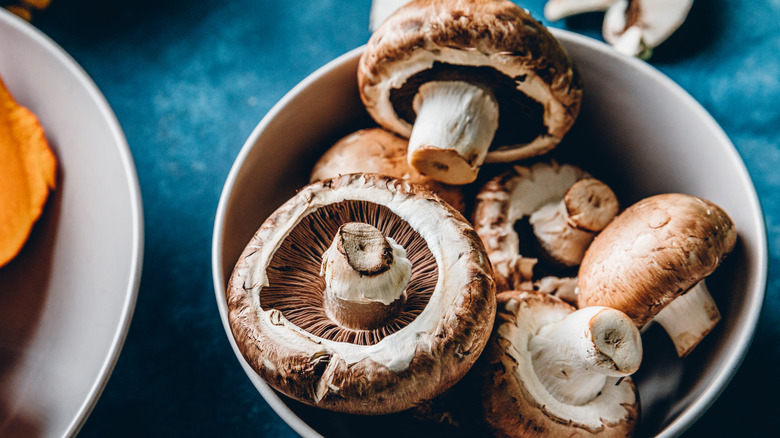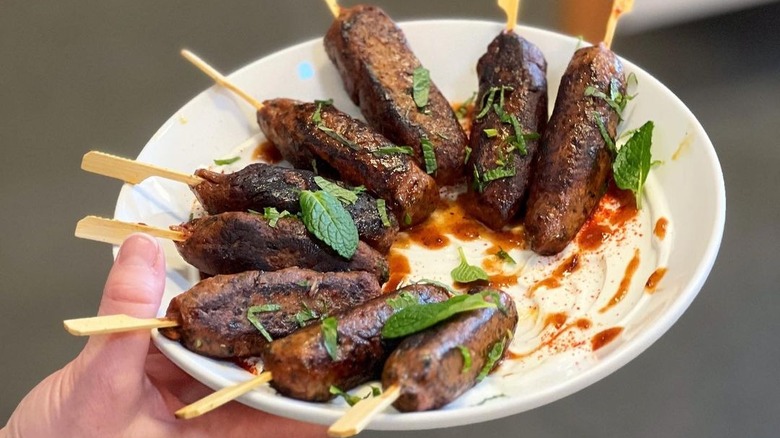Mamu Mushrooms Make For A Savory Meat Alternative
With growing climate concerns and ever-more plant-focused eaters, vegan foods are on the rise. What was once a world dominated by soy milk and raw vegetables has now transformed into a lucrative industry worth up to $60 billion by 2028.
New vegan products consistently hit the shelves; however, they're not all the same in composition. Most vegan foods use grains and legumes to replenish protein content. So to mix up the component base, turn to mamu mushrooms. Based on the name, it sounds like a varietal of fungi. However, mamu mushrooms are actually a combination consisting of chickpeas blended with king oysters, white buttons, and shiitake mushrooms.
Crafted by two-Michelin-starred chef Srijith Gopinathan of acclaimed Copra in San Francisco, mamu mushrooms are unique in their industry-focused creation. Currently, they're not sold to the general public; the food is exclusively distributed to professional kitchens, especially with a fine-dining skew. Let's dive into how the innovative product comes together.
What are mamu mushrooms?
The food's exact manufacturing method is protected by Sempera Organic, which owns the product. The ingredient list eludes a concise, all-natural composition — only the three mushroom species, chickpeas, oil, and water. To increase bioavailability, the chickpeas are fermented, upping the content of nutrients like B12, and calcium. Additionally, both the root structure, as well as mushroom heads are included in the mix, altering the texture of the blend.
Mamu comes in a texture reminiscent of ground beef and can be formed into patties, skewered, fried, and integrated into other applications. It's stored in frozen form, extending its shelf life. Mamu's juicy texture readily absorbs flavors. The food's aim is to deliver a savory substance, absent of strong mushroom notes or meat-mimicking qualities — perfect for creative re-imagination. Such an intention is even eluded by the food's name, which rescrambles letters from the word umami. Let's dive into applications.
How are mamu mushrooms used?
Mamu mushrooms are poised for a diverse array of applications, from baking and frying, to sauteeing or steaming. Flavored with spices, they can make for a charcoal-grilled kebab, their texture holding up to open fire. Currently, that's how chef Srijith Gopinathan serves the food at his restaurant Ettan — garnished with Fresno chili, mint, and pomegranate for added zing.
Alternatively, mamu mushrooms can also be marinated and fried at high temperatures. During their creation process, malleability and ease of integration were intentional goals. Chefs stir fry them in a wok or even craft a dessert. They're ripe for creativity; odds are there's a way to produce a delicious dish.
Keep an eye out out for an establishment near you serving this innovative foodstuff. It is undoubtedly worth a try. Rather than simply a vegan substitute, it's a creative food forged for a variety of uses.


